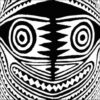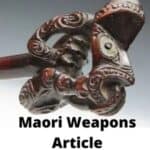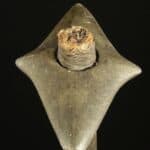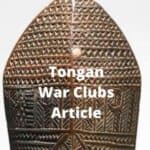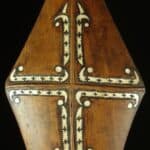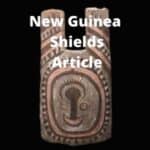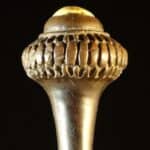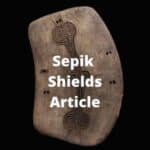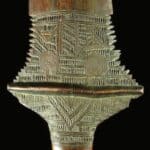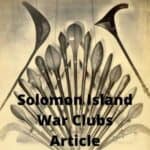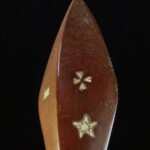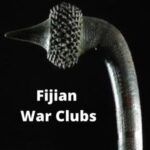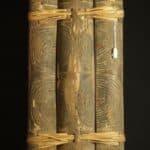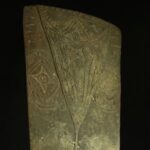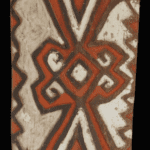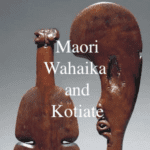Sepik Shields: The Art of War
There are many different styles of Sepik Shields. They vary depending on the region/tribe they come from. The aim of this article is to help you recognize Sepik Shields and help you visually identify where they come from.. Hopefully, you will appreciate the variety of this wonderful New Guinea art form.
The Sepik River and surrounding areas is one of the greatest art-producing regions on earth. The variety and styles are reflected in their shield masks and Sculpture.
I Buy Sepik shields especially old and unusual examples. I also buy shields from the Solomon Islands and Aboriginal shields. If you want to sell a war Shield then please send me a Jpeg. I will let you know what it is worth to me.
If you just want to know what your shield is worth send me an image and the size. I would love to see it.
If you cant find the shield your researching here then please try my article on new guinea shields or Aboriginal shields.
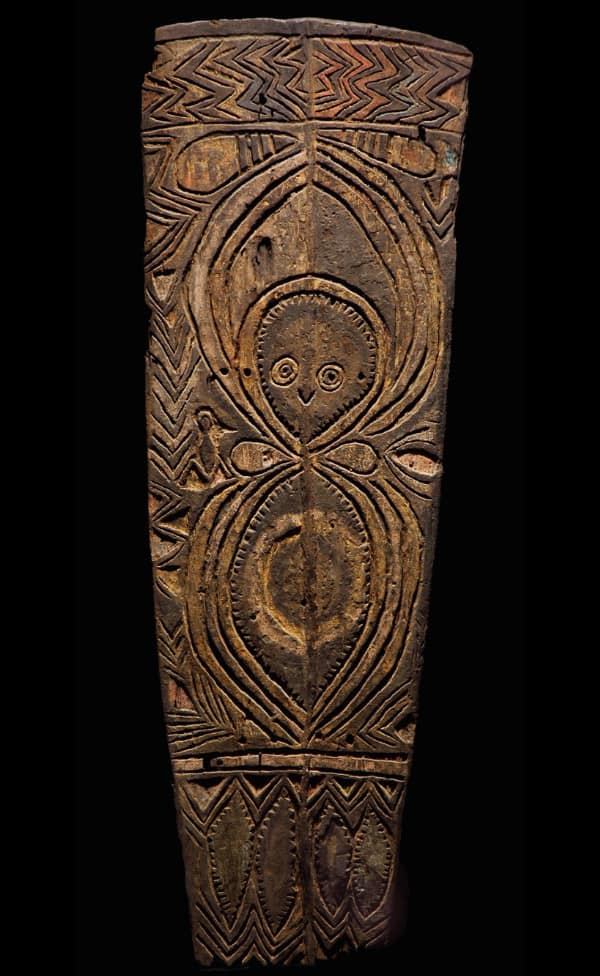
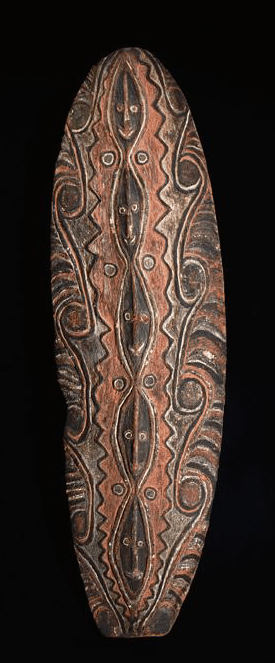
Sepik Shields general information
Sepik shields are covered in designs from the culture that created them. The designs were used to spiritually empower the shields and were a form of psychological warfare through tribal intimidation.
Sepik shields vary greatly in size as well as design. This reflects how they were used. Some small shields were used almost as a form of Body armor. Other large shields as a movable defensive point carried by an unarmed person for archers to hide behind
The following is a visual guide on shields but due to the huge variety throughout the Sepik is not inclusive.
Tribal Shields by Area
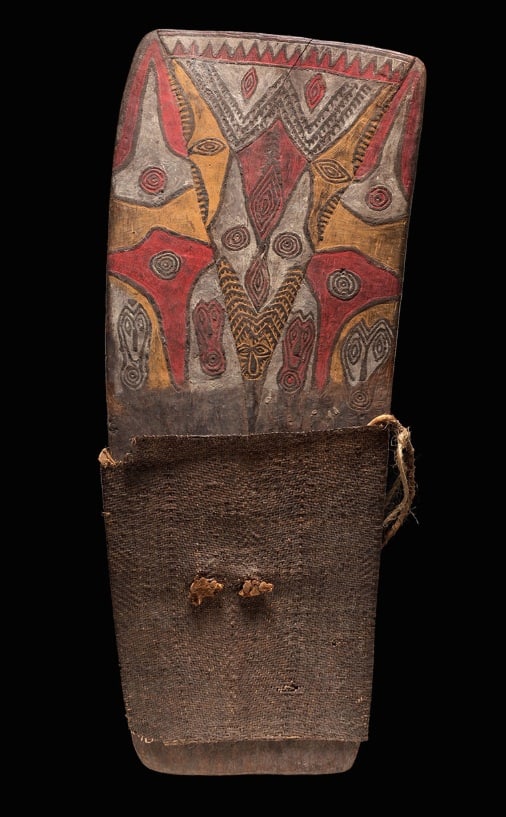
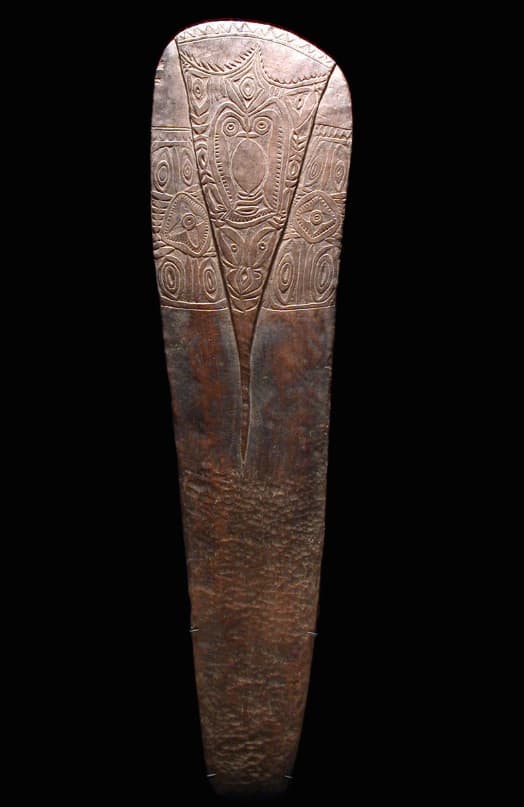
Middle Ramu Shields
Middle ramu shields have a distinctive raised triangular section at the top. this triangular section normally contains a spirit face. They are around 120 cm tall. Some of these shields still have tightly woven fibre on the bottom half but most dont as it is quite fragile.
Most are usually pierced at the sides for attachment of a strap handle. Those that are not had a handle attached to the woven section.
Not much is know about how these shields were used in combat but it has been suggested they predominantly acted as a wooden breastplate
Karkar Island Shield
Karkar island shields are easily recognized by their fine dyed rattan covering. They are usually Red yellow and black with geometric designs.
They are rare and sort after by collectors.
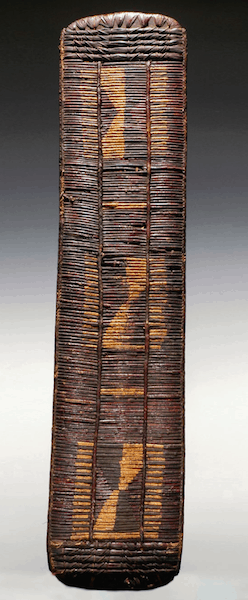
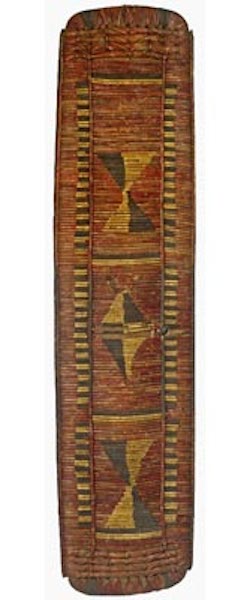
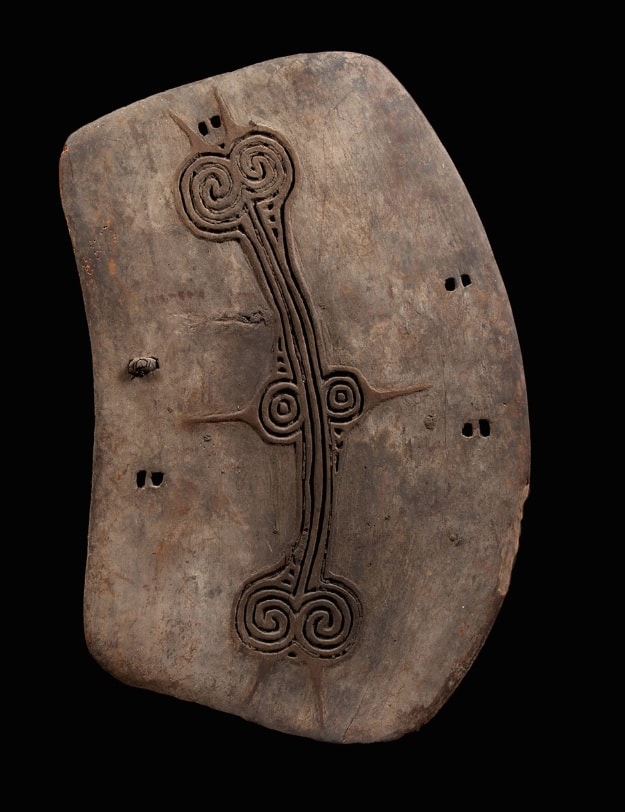
Lumi Shields
Luni Shields are often Kidney-shaped and quite light. the front has an abstract design normally with two spirals at the top and bottom. They normally have four pairs of closely space piercings for attachment of the handle.
The designs on the front can be incised or protrude. the protruding design is more popular with collectors as it is perceived as being older.
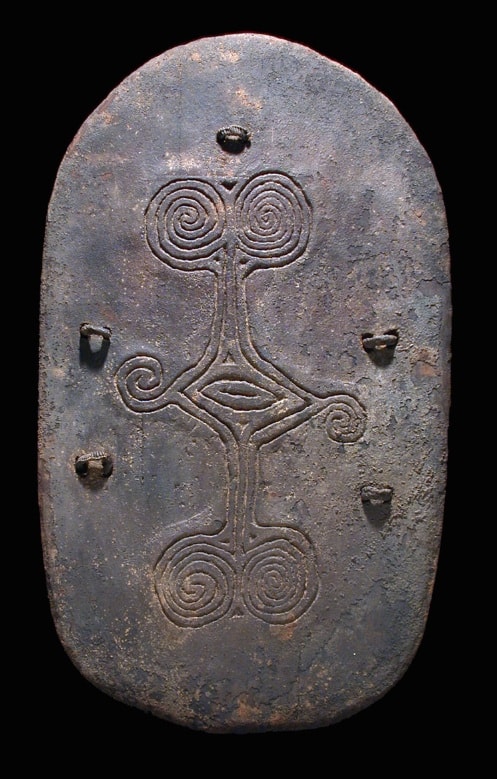


Lower Ramu River Shields
Shields from the Lower Ramu usually have a strong single spirit face near the center. They are Red with the details in white.
They were used by warriors using short arrow like spears propelled by a spear thrower.
Shields from Manum island the lower ramu and murik lakes are all similar in style.
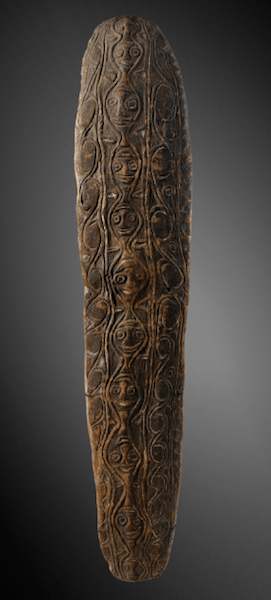
Leonard Schultze River Shields
Shields from this area usually have one or many faces on the front. The other areas of the shield are covered in a distinctive motif.
The handle on the back consists of two verticle ridges pierce four times. Strong sticks are lashed between the two ridges to form the handle.
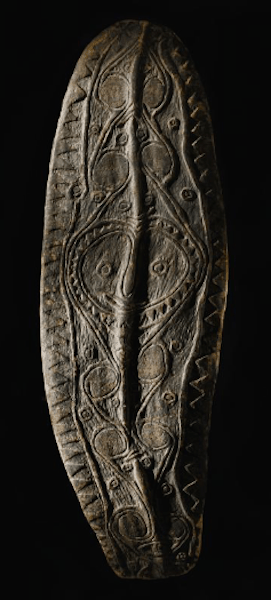
Green River Shields
Green River shields are often rectangular in shape and are wide compared to most new guinea shields They average 130 cm tall and 60 cm wide. Designs on the front vary.
The shield is carried by a horizontal bast strap attached to holes on the side of the shield. A second strap attaches from a hole at the top center to the middle of the first strap.
These shields were used as portable barriers and carried by an unarmed shield bearer with support archers behind him.
There are more Green River shields that were made for tourists than made for warfare
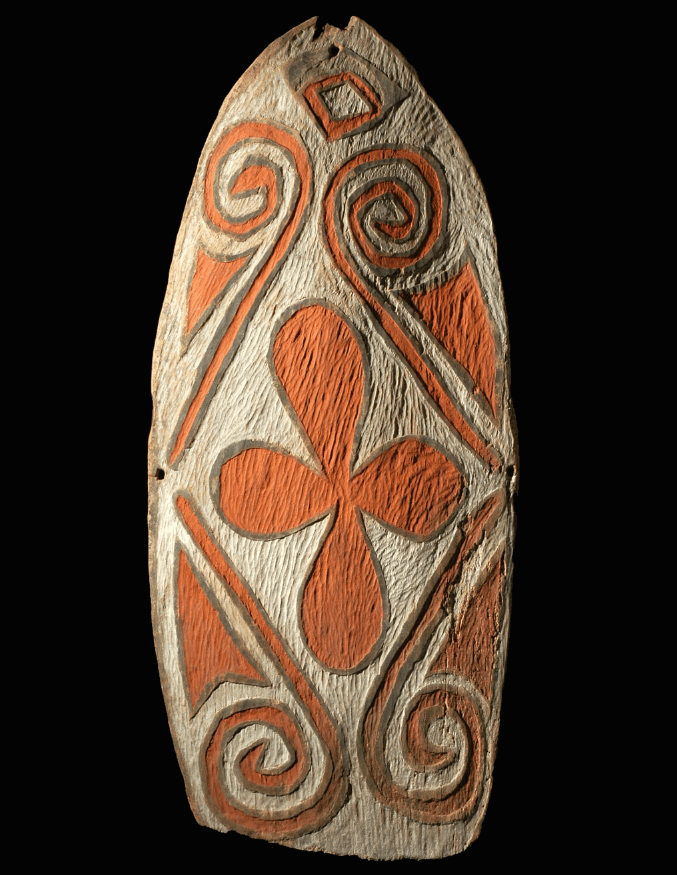
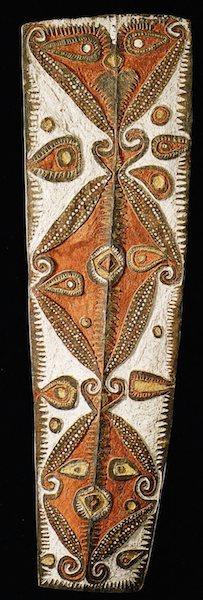
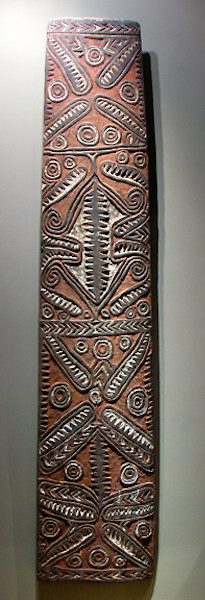
May River Shields
May River shields are long and narrow and covered in abstract motifs. These abstract clam motifs along with stunning colours make them one of the most beautiful Sepik shields.
Unfortunately, there are numerous later examples that were not made for warfare but made for sale. These later shields are still popular with interior designers but not very collectable.
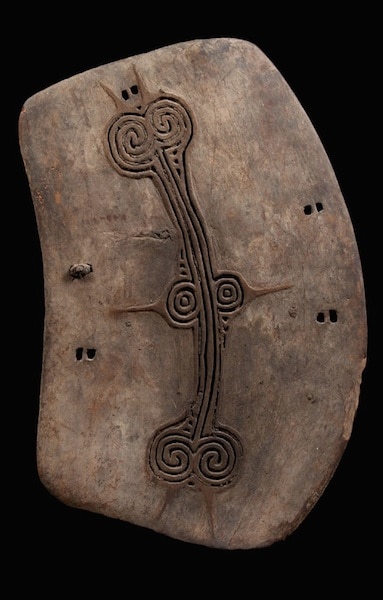
Lumi Shields
Lumi shields are normally a distinctive kidney shape. They have either a raise or incised clan motif. The motif consists of spirals top and bottom and can be seen as apomorphic.
They have four pairs of closely spaced holes on the sides for attachment of the handle.
Collectors prefer shields with raised designs as they are perceived to be older. The design differences are regional and not age related.
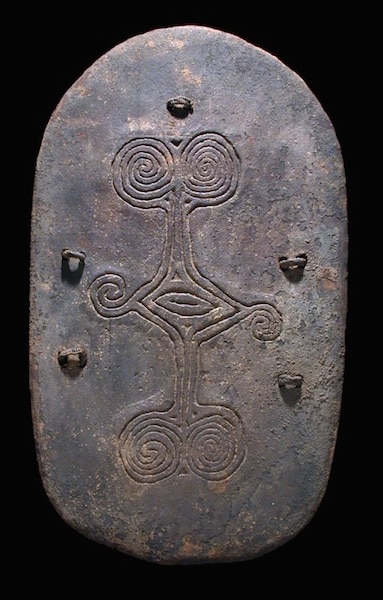
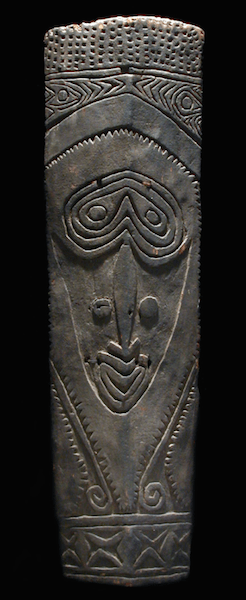
Washkuk Shield
Shields from Washkuk can be easily recognized by the central face. They are well carved with the oldest examples having a pierced nose.
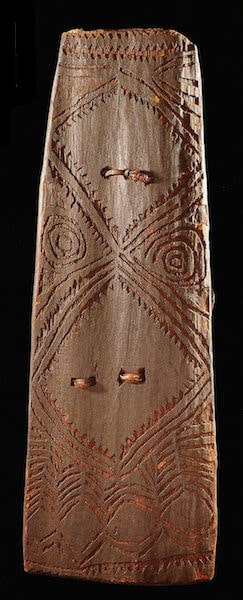
Torrecelli
Mountains Shield
Sepik shields from this area tend to be a bit roughly made. The abstract designs are not as refined in other area nearer the river.
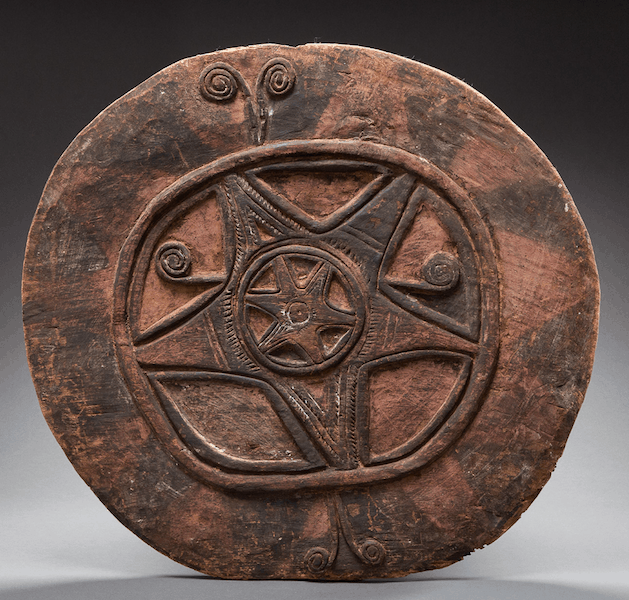
Astrolab Bay Shields
Shields from Astrolab Bay are the most collectible and valuable of all New Guinea shields. They have a distinctive round shape and all have an early collection date. Astrolab Bay was a early German settlement and shield production had ended by 1920.
Biwat Shields
Biwat Shields are one of the most distinctive and best known Sepik shields. The almost always have three large well carved faces on the front.
Older shields tend to be better carved and will have the faces nose pierced,
Many more Biwat shields made for tourists have been collected than were ever made for sale.
Old examples are sort after and very collectible but newer shields only have aesthetic value.
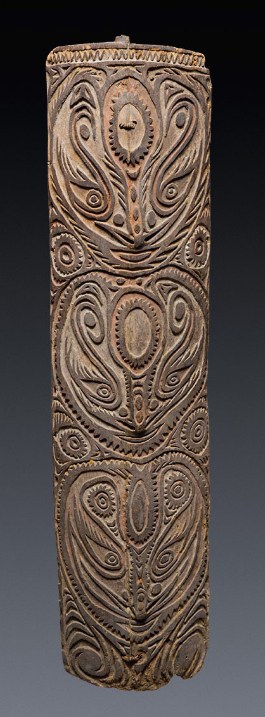
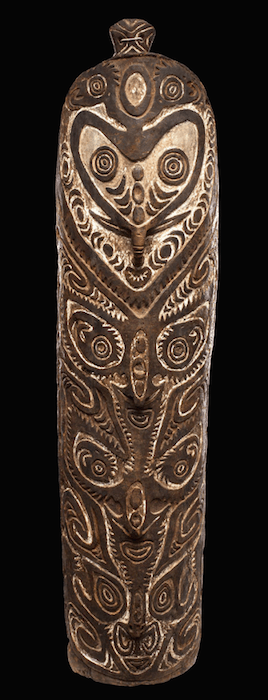
Kwoma Shields
Kwoma shields are made from pig skin or crocodile skin stretched on a rattan frame. This is of the only hide covered shield in New Guinea.
These shield, however, are not very popular with collectors as artistically they are dull.
There are a fair few later examples made to sell rather than to use.
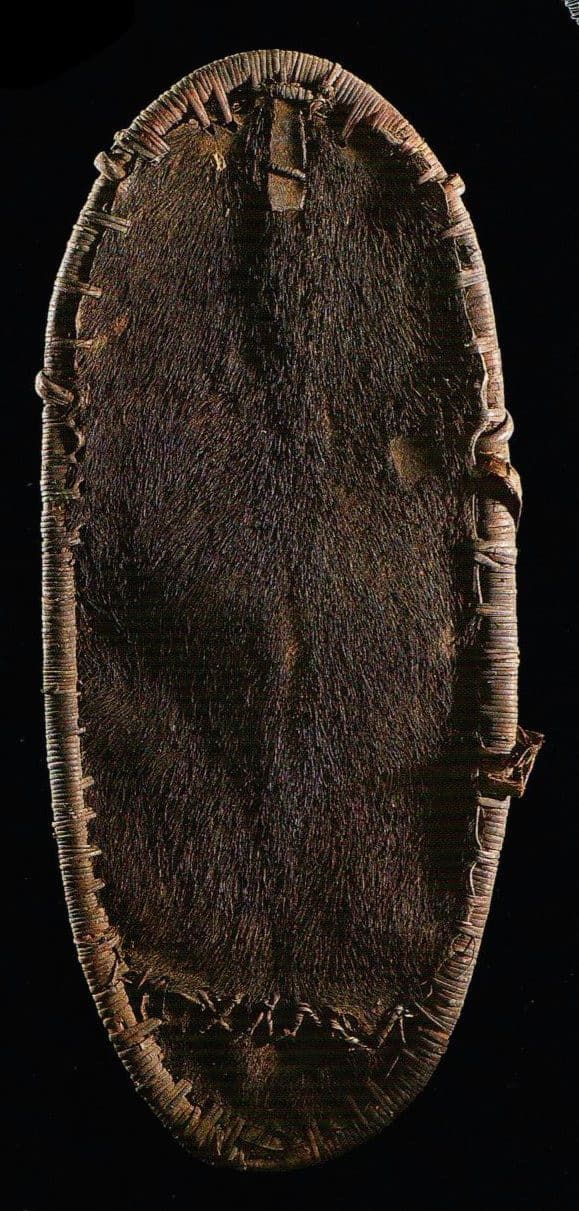
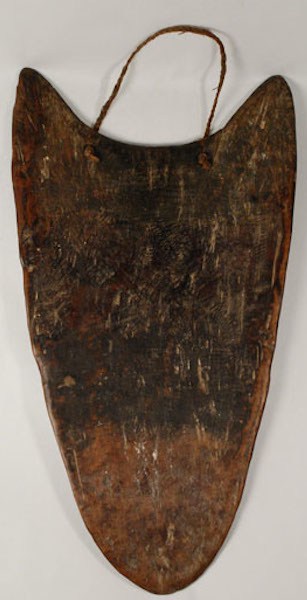
Madang Archers shield
This small U shaped shield comes from the mountain regions East of the Ramu. They are smaller than archers shields from the highlands Mendi area and not as colourful.
Archers would suspend them under the armpit and when facing sideways act like body armor.
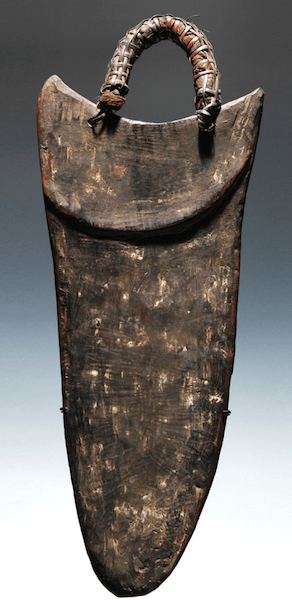
More about Sepik Shields
As I mentioned there is a huge variety of New Guinea War Shields and this is only a starting place. If you have a shield you think may come from Papua New Guinea or from the South Pacific please feel free to get in contact with me. The value of shields varies from a couple of hundred dollars to tens of thousands. The value depends on age (the older the better), rarity designs (faces and figures always increase value) and of course condition. Some shields were also made to sell to tourists and not for native use. These shields have minimal collectible value and are decorative
Shields are native weapons but they are also art. Papua New Guinea shields can be lovely and they can often be a form of Tribal canvas for some talented artists
If you didn’t find the shield you were researching her also try my article on Aboriginal Shields
For a great book on New Guinea Shields please read Shields of Melanesia
All images in this article are for educational purposes only.
This site may contain copyrighted material the use of which was not specified by the copyright owner.
